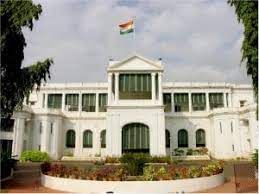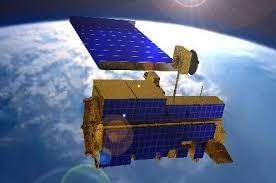UPSC Daily Current Affairs- 14th July 2023 | Current Affairs & Hindu Analysis: Daily, Weekly & Monthly PDF Download
GS-I
Solomon Islands
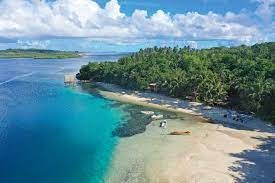
Why in News?
Recently, the Prime Minister of the Solomon Islands met Chinese leader Xi Jinping in Beijing.
Background:-
- Prime Minister Manasseh Sogavare met Chinese leader Xi Jinping and Premier Li Qiang.
- Sogavare and Mr Li presided over the signing of agreements on police, economic and technical cooperation.
About Solomon Islands:-
- Solomon Islands is a sovereign country consisting of six major islands and over 900 smaller islands in Oceania.
- Location: southwestern Pacific Ocean.
- The Solomon Islands is part of the ethnically Melanesian group of islands in the Pacific.
- It lies between Papua New Guinea and Vanuatu.
- Historical Background: The islands, which were initially controlled by the British Empire during the colonial era, went through the hands of Germany and Japan and then back to the U.K. after the Americans took over the islands from the Japanese during World War II.
- The islands became independent in 1978 to become a constitutional monarchy under the British Crown, with a parliamentary system of government.
- Capital: Honiara, located on the largest island,
- Population: less than 700,000.
U.S.-China Rivalry in South Pacific:-
- Recently, China and the Solomon Islands have signed an inter-governmental framework agreement on security cooperation.
- The text of the pact has not been released publicly.
- However, the leaked document enables China to send its “police, armed police, military personnel and other law enforcement and armed forces” to the islands at the Solomon Island government’s request, or if China sees that the safety of its projects and personnel in the islands are at risk.
- It also provides for China’s naval vessels to utilize the islands for logistics support.
- There have been speculations that China might be building its next overseas naval base in the Solomon Islands after Djibouti.
- Australia, which has had a security agreement with Solomon since 2017, has been the most vocal critic of the agreement.
- It claimed it was concerned about the lack of transparency with which this agreement has been developed, noting its potential to undermine stability in our region.
- Other countries including the US and New Zealand, have also voiced concern.
- The US has already announced its plans to reopen its embassy in Honiara (Solomon Capital), which has been closed since 1993.
- The US State Department pointed out that the agreement could stir up instability in the Solomon Islands.
- US President Joe Biden convened a summit of Pacific Island leaders in September 2022 to unveil a strategy that included cooperation in climate change, maritime security and preventing overfishing.
- Biden also promised $810 million in new aid for Pacific Island nations over the next decade, including $130 million to address the effects of climate change.
- The Agreements signed by Solomon Islands and Chinese officials recently during the visit of Solomon Prime Minister Manasseh Sogavare include an implementation plan for police cooperation through 2025.
Source: The Hindu
What is the Solar Maximum?

Why in News?
It has been recently reported that the sun is expected to reach “solar maximum” in the next two years.
About Solar Maximum:
- The sun goes through a natural solar cycle approximately every 11 years. The cycle is marked by the increase and decrease of sunspots -- visible as dark blemishes on the sun's surface, or photosphere.
- The greatest number of sunspots in any given solar cycle is designated as "solar maximum." The lowest number is "solar minimum."
- Impacts:
- This increased solar activity can cause extreme space weather events, including solar flares and eruptions.
- It can also disrupt radio communications and the power grid and have serious health consequences for astronauts.
What is the Solar Cycle?
- The Sun is a huge ball of electrically-charged hot gas. This charged gas moves, generating a powerful magnetic field.
- Every 11 years or so, the Sun's magnetic field completely flips. This means that the Sun's north and south poles switch places.
- Then it takes about another 11 years for the Sun’s north and south poles to flip back again.
- Thus, the solar cycle is the cycle that the Sun’s magnetic field goes through approximately every 11 years.
- The solar cycle affects activity on the surface of the Sun, such as sunspots which are caused by the Sun's magnetic fields.
- As the magnetic fields change, so does the amount of activity on the Sun's surface.
- The beginning of a solar cycle is a solar minimum, or when the Sun has the least sunspots. Over time, solar activity—and the number of sunspots—increases.
- The middle of the solar cycle is the solar maximum, or when the Sun has the most sunspots.
- As the cycle ends, it fades back to the solar minimum and then a new cycle begins.
Source: Indian Express
GS-II
Section 144 in Flood-prone Areas
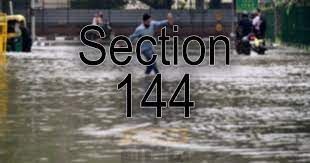
Why in News?
The Yamuna river in Delhi has risen to an unprecedented 207.81 metres, breaching the previous all-time high of 207.49 metres set in 1978.
About
- Incessant rain in Delhi and surrounding areas, as well as release of water from HathniKund Barrage has has heightened the risk of flood-like conditions in low-lying areas in the vicinity of the river.
- The Delhi Police imposed prohibitory measures under CrPC section 144 in flood-prone areas of the city.
- What is Section 144?
- The law empowers a district magistrate, a sub-divisional magistrate or any other executive magistrate specially empowered by the state government in this behalf to issue orders to prevent and address urgent cases of apprehended danger or nuisance.
- The magistrate has to pass a written order which may be directed against a particular individual, or to persons residing in a particular place or area, or to the public generally when frequenting or visiting a particular place or area.
- In emergency cases, the magistrate can pass these orders without prior notice to the individual against whom the order is directed.
Provisions
- The magistrate can direct any person to abstain from a certain act or to take a certain order with respect to certain property in his possession or under his management.
- This usually includes restrictions on movement, carrying arms and from assembling unlawfully.
- It is generally believed that assembly of three or more people is prohibited under Section 144.
- For a single individual: It can be used to restrict even a single individual. Such an order is passed when the magistrate considers that it is likely to prevent, or tends to prevent, obstruction, annoyance or injury to any person.
- Time frame: No order passed under Section 144 can remain in force for more than two months from the date of the order, unless the state government considers it necessary. Even then, the total period cannot extend to more than six months.
- The magistrate can direct any person to abstain from a certain act or to take a certain order with respect to certain property in his possession or under his management.
When it is imposed?
- There is no hard and fast rule about the situations in which the section can be invoked.
- The section has been imposed in a variety of situations, from the installation of CCTV cameras to the prohibition of using a certain kind of manjha while flying kites.
- Recently, Section 144 was imposed in Kaziranga National Park in Assam to avoid unnecessary gatherings at animal corridors, and ensure the safety of animals during monsoon season.
Imposition during flooding
- Prohibitory measures under Section 144 in flood-prone areas of the city are aimed towards preventing chaos and public movement in big groups.
Source: IE
About Armed Forces (Special Powers) Act (AFSPA)

Why in News?
According to Army sources, there is a significant limitation for security forces operating without the legal protection provided by the Armed Forces Special Powers Act (AFSPA) in Manipur.
About Armed Forces (Special Powers) Act (AFSPA):
- It is a law enacted by the Parliament in 1958 which gives armed forces (Army, the Air Force and Central paramilitary forces) the special powers and immunity to maintain public order in “disturbed areas”.
- When is it applied? It can be applied only after an area has been declared “disturbed” under section 2 of the act.
- What is a Disturbed area? An area can be considered to be disturbed due to differences or disputes among different religious, racial, language or regional groups or castes or communities.
- Who declares an area as disturbed? Section (3) of AFSPA empowers the governor of the state/Union territory to issue an official notification declaring the state or a region within as a “disturbed area”, after which the centre can decide whether to send in armed forces.
- The ‘special powers’ of armed forces under Section 4 are:
- Power to use force even to the extent of causing death, destroy arms / ammunition dumps, fortifications/ shelters / hideouts.
- Power to arrest without a warrant.
- Power to seize and search’ without any warrant any premise.
- It stipulates that arrested persons and seized property is to be handed over to the nearest Police Station with least possible delay.
- These armed forces are immune from prosecution unless the Union Government provides sanction to the prosecuting agencies.\
Source: PIB
Does India really need state Governors?
Why in News?
The recent action taken by Tamil Nadu Governor R N Ravi to terminate the appointment of state minister, who was arrested recently, has once again brought attention to the tussle between state governments and the Governor’s office.
About Governor: Constitutional provisions related to Governor
- Article 153 says that there shall be a Governor for each State. One person can be appointed as Governor for two or more States.
- A Governor is appointed by the President and is a nominee of the Central Government. It is stated that the Governor has a dual role.
- He is the constitutional head of the state, bound by the advice of his council of ministers (CoM).
- Articles 157 and 158 specify eligibility requirements for the post of governor.
- Governor has the power to grant pardons, reprieves, etc. (Article 161).
- There is a CoM with the CM at the head to aid and advise the Governor in the exercise of his functions, except some conditions for discretion. (Article 163)
- Governor appoints the Chief Minister and other Ministers (Article 164).
- Governor assents, withholds assent, or reserves the bill for the consideration of the President passed by the Legislative Assembly (Article 200).
- Governor may promulgate the Ordinances under certain circumstances (Article 213).
Powers of Governor
Executive Powers:
- These powers are exercised by the council of ministers in the name of Governor.
- Governor is only nominal head and council of ministers is the real executive.
- He is the constitutional head of the state who appoints the leader of majority party as chief minister.
- He can seek any information from the chief minister.
- He appoints the advocate general, chairman and members of the respective state public commission.
- He can recommend the imposition of constitutional emergency in a state to the President.
- During the period of President’s rule in a state, the governor enjoys extensive executive powers as an agent of the President.
Legislative Powers:
- He is part of state legislative assembly.
- No bill can become a law until the governor signs it.
- He can withhold a bill and send it to the President for consideration.
- He can dissolve the State Assembly before the expiry of its term on the advice of the Chief Minister or as directed by the President.
Judicial Powers:
- The governor appoints the district judges.
- He is consulted in the appointment of the judges of the High Court by the President
- He can, pardon, remit and commute the sentence of a person convicted by a state court.
Financial Powers:
- He causes the annual budget to be laid before the Vidhan Sabha;
- No money bill can be introduced without his prior approval.
Discretionary Powers:
- If no party gets an absolute majority, the Governor can use his discretion in the selection of the Chief Minister;
- During an emergency he can override the advice of the council of ministers.
- At such times, he acts as an agent of the President and becomes the real ruler of the state;
- He uses his discretion in submitting a report to the President regarding the affairs of the state; and
- He can withhold his assent to a bill and send it to the President for his approval.
Controversies Related to Governor’s post:
Central Interference: There have been numerous instances of the Governor’s position being abused, usually at the request of the Centre’s ruling party.
- The procedure of appointment has been the root of the problem.
Acting as Puppet Rulers: The Governor of Rajasthan has recently been charged for breaking the model code of conduct.
- His support for the ruling party goes against the ethos of non-partisanship.
Favouring a Particular Political Party: The governor’s discretionary powers to ask the leader of the largest party/alliance to form the government after an election have frequently been abused to favour one political party over another.
Misuse of Power: A Governor’s request for President’s Rule in a state has not always been based on ‘objective material,’ but rather on political whim or fancy.
Controversies Related to Governor’s Role:
- Abuse of Power by the Centre: There are numerous examples of the Governor’s position being abused, usually at the behest of the ruling party at the Centre.
- The process of appointment has generally been the cause behind it.
- Biased Ideology: In several cases, politicians and former bureaucrats identifying with a particular political ideology have been appointed as the Governors by the central government.
- This goes against the constitutionally mandated neutral seat and has resulted in bias, as appears to have happened in Karnataka and Goa.
- Puppet Rulers: Recently, the Governor of Rajasthan has been charged with the violation of the model code of conduct. His support of the central ruling party is against the spirit of non-partisanship that is expected from the person sitting on constitutional posts.
- Due to such incidents, negative terms like an agent of the Centre, Puppet and rubber stamps are used to describe a governor of the state.
- Favouring a Particular Political Party: Governor’s discretionary powers to invite the leader of the largest party/alliance, post-election, to form the government has often been misused to favour a particular political party.
- Misuse of Power: A Governor’s recommendation for President’s Rule (Article 356) in a state has not always been based on ‘objective material’, but on political whim or fancy.
The Supreme Court’s stand on office of Governor
- According to the Supreme Court, the Governor cannot exercise any power that has not been granted to them by the Constitution or a law enacted in accordance with it.
- The Supreme Court also established the limits of gubernatorial overreach through a series of significant rulings, including the notable cases of:
- R. Bommai (1994),
- Rameshwar Prasad (Bihar Assembly Dissolution Case of 2006), and
- Nabam Rebia (Arunachal Assembly Case of 2016).
- These decisions effectively eliminate or minimise the potential for excessive abuse of power, subject to the duration required for judicial review.
Way Forward:
The governor has to see that a stable government is formed in the state and also look into the legal validity of the law passed by state legislature and recommend president rule in the state if there is a breakdown of constitutional machinery. Thus the post of governor is essential for the healthy functioning of democracy though it is true that this post has been reduced to becoming a retirement package for politicians.
Source: Indian Express
GS-III
Nature Restoration Law
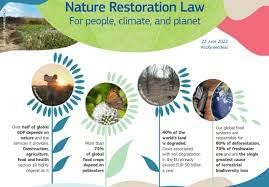
Why in News?
Members of the European Parliament (MEP) recently voted to pass the EU nature restoration law with 336 votes in favour, 300 against and 13 abstentions.
Nature restoration law
- The law aims to repair the 80% of European habitats that are in poor condition by 2050.
- There will be legally binding targets for every Member State.
- The aim is to cover at least 20% of the EU's land and sea areas by 2030 with nature restoration measures, and eventually extend these to all ecosystems in need of restoration by 2050.
The targets proposed include
- Reversing the decline of pollinator populations by 2030 and increasing their populations from there on.
- No net loss of green urban spaces by 2030, a 5% increase by 2050, a minimum of 10% tree canopy cover.
- In agricultural ecosystems, an overall increase of biodiversity, and a positive trend for grassland butterflies, farmland birds, organic carbon.
- Restoration and rewetting of drained peatlands under agricultural use and in peat extraction sites.
- In forest ecosystems, overall increase of biodiversity and a positive trend for forest connectivity, forest birds and stock of organic carbon.
- Restoring marine habitats such as seagrasses or sediment bottoms, and restoring the habitats of iconic marine species such as dolphins and porpoises, sharks and seabirds.
- Removing river barriers so that at least 25 000 km of rivers would be turned into free-flowing rivers by 2030.
Significance of The Nature Restoration Law
- It is an essential piece of the European Green Deal and follows the scientific consensus and recommendations to restore Europe’s ecosystems.
- Farmers and fishers will benefit from it and it ensures a habitable earth for future generations.
- The law implements a landmark agreement, where member countries — including the EU — agreed to protect 30% of the world’s lands and oceans.
Source: The Hindu
Banks Heralding Accelerated Rural & Agriculture Transformation (BHARAT)

Why in News?
The Ministry of Agriculture & Farmers Welfare launched a campaign for banks under the Agriculture Infrastructure Fund titled BHARAT.
BHARAT
- The one month-long Campaign was launched with a target of Rs 7200 crore.
- The aim of the campaign is to get active involvement and support of members of
commercial Banks in the public and private sector, Regional Rural Banks, Small Finance Banks, NBFCs and select cooperative Banks to promote the Scheme of Agriculture Infrastructure Fund.
Agriculture Infrastructure Fund
- It is a financing facility launched in 2020 for farm-gate infrastructure for farmers.
- Under this scheme, Rs 1 lakh crore is to be disbursed by the financial year 2025-26 and the interest subvention and credit guarantee assistance will be given till the year 2032-33.
Objectives
- Improved marketing infrastructure to allow farmers to sell directly to a larger base of consumers and hence, increase value realization for the farmers. This will improve the overall income of farmers.
- Investments in logistics infrastructure so that farmers will be able to sell in the market with reduced post-harvest losses and a smaller number of intermediaries. This further will make farmers independent and improve access to the market.
- Modern packaging and cold storage system access to allow farmers to decide when to sell in the market and improve realization.
- Community farming assets for improved productivity and optimization of inputs.
Achievement
- This Scheme has resulted in creation of more than 31, 850 agri infra projects in the country with ₹24750 crore as loan amount under AIF with an outlay of ₹ 42,000 crores.
Concluding Remarks
- The role of infrastructure is crucial for agriculture development and for taking the production dynamics to the next level.
- Development of such infrastructure shall also address the vagaries of nature, the regional disparities, development of human resource and realization of the full potential of our limited land resource.
Source: PIB
Moderate Resolution Imaging Spectroradiometer (MODIS)
Why in News?
What is Moderate Resolution Imaging Spectroradiometer?Recently, scientists’ have analyzed data generated from the Moderate Resolution Imaging Spectroradiometer and said that climate change has altered the colour of 56 per cent of the world’s oceans.
Moderate Resolution Imaging Spectroradiometer is a key instrument aboard the Terra (originally known as EOS AM-1) and Aqua (originally known as EOS PM-1) satellites.
- Terra's orbit around the Earth is timed so that it passes from north to south across the equator in the morning, while Aqua passes south to north over the equator in the afternoon.
- Terra MODIS and Aqua MODIS are viewing the entire Earth's surface every 1 to 2 days, acquiring data in 36 spectral bands, or groups of wavelengths.
- These data will improve our understanding of global dynamics and processes occurring on the land, in the oceans, and in the lower atmosphere.
It is playing a vital role in the development of validated, global, interactive Earth system models able to predict global change accurately enough to assist policymakers in making sound decisions concerning the protection of our environment.
Moderate Resolution Imaging Spectroradiometer: Key FindingsSome of the key findings of the analysis of data generated from Moderate Resolution Imaging Spectroradiometer are as follows:
- The waters in the tropics have turned green and the southern Indian Ocean, in particular, has seen a significant colour change.
- Changes in the ocean colour indicate alterations to the phytoplankton communities - since phytoplankton are essential for most life in the ocean as the base of the marine food web.
- Human eyes are not sensitive enough to differentiate subtle colour changes.
- The oceans appear blue, but the true colour may contain a mix of subtler wavelengths, from blue to green and even red.
- The green hue comes from chlorophyll, a pigment that helps phytoplankton make food.
- A change in colour due to an increase or decline in the population will impact organisms that feed on plankton.
- Though the southern Indian Ocean is seeing a significant change, the waters near India are not following the same trend.
Source: The Hindu
|
38 videos|5283 docs|1116 tests
|


